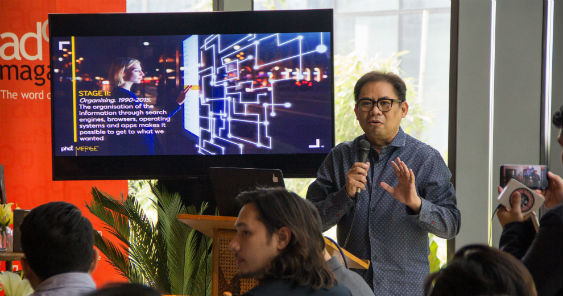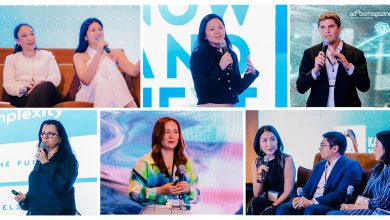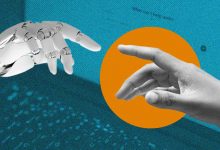Today, the smartphone has become one of, if not the most, powerful devices for consumers. More than a tool, it is an avenue for communication between people and groups of people. Professionals conduct business through their smartphones, which host all the apps they need – a word processor, spreadsheets, a calculator, a calendar, a work-productivity tracker, and more. Information can be accessed anywhere, anytime – all with a tap of the finger.
Yet, the smartphone is just one of the many technological developments we’re seeing today. AI, VR, MR, ML, algorithms are buzzwords that are quickly coming to life and creating our reality. Machines and technology will become even more embedded in our lives, and they will even become more intelligent as they continue learning from us and our behaviours.
This year, PHD Media has launched its thought-leadership book, ‘Merge: the closing gap between technology and us’, which is a definitive piece on where the story of humans and technology starts, and where it is heading in the next 50 years. And what the authors foresee is a future where humanity and technology become inextricably linked. The book also addresses the urgent implications for marketing and the exciting opportunities unfolding for brands.
During the Philippine launch of ‘Merge’ last October 4, 2017, Mickey De Castro, General Manager of PHD Media Philippines presented the five phases of the human-technology merger and the nine fundamental developments that will redefine what it means to be human.
The five phases start in the 1950s with Surfacing, an era where humans built technologies like computers and the internet to help surface data. The next phase is Organizing, where humans organised data and information through the use of four technologies: search engines, browsers, apps, and smartphones. In the third phase, the period that the world is currently in, humans extract useful information from the organised data in the last phase. The next step will see technology starting to anticipate humans’ needs. Finally, the world will be elevated to a state where biotechnology and nanotechnology will be used to the extent that humans and technology become one and the same.
The book also identifies nine fundamental developments that already exist today and will continue to evolve over the coming phases. These will greatly impact not only users, but also consumers, brands and marketers. As such, PHD has classified these nine developments into three main categories: messaging, wearables and hearables, and data-layering.
Under the messaging category, chatbots and virtual assistants are key technological advancements in the overall journey. “Bot-life” include chatbots, natural language interfaces, image recognition and others. The “Messaging Concierge” technology makes use of bots to organise and automate conversations between brands and consumers, while the “Sentient VPA” has a 96% accuracy in understanding users’ natural language. Ambient AI, which can be seen today in in-home and in-car voice-activated consoles, will create more environments that are responsive to humans.
Wearable technology has already become mainstream over the past few years in the form of pedometers, pulse rate counters and other fitness trackers. Yet, the book identifies Wearables and Hearables as technologies that will impact humans in the next phases of the merger. “Next wave wearables” like the Smart Ring can read heart rates, step counts, and later on, potentially even glucose levels. On the other hand, hearables are devices that can conduct and even enhance sound without the use of wires and lines. Therefore, the future will see more of non-screen technologies come into play.
Data-layering includes the intelligent layering of data to produce augmented reality, mixed reality, and virtual reality. Finally, the AR web will soon create virtual worlds and spaces that exist side-by-side with reality.
These technologies will redefine the world in the coming years, and will continue to evolve until the merger between humans and technology is complete. However, De Castro reminded audiences that “people drive technology; not the other way around.”
‘Merge’ is PHD Media’s seventh thought-leadership book. When asked why this particular topic was chosen by the agency, De Castro said: “Our mantra is to find better ways. We see technology adapting to us. It is finding a better way to deliver services to us. We are essentially future-proofing ourselves for the next decade or century.”
PHD Media Philippines’ Strategic Planning Director, Poma Malantic, added: “PHD is very passionate about technology; we truly believe in its power. It is our job as media practitioners to tell everybody (in the country) about what’s happening right now and ensure that we’re not lagging behind in terms of the knowledge and what we need to do to prepare for the future.”
You can download ‘Merge | The closing gap between technology and us’ from Amazon or via the PHD Media app. All proceeds from the sale of the book go to the United Nations Children’s Fund.








